Our Binders as a Solution
Mycotoxin binders can be used to sequestrate the toxins and prevent them from being absorbed in the animal's digestive tract.
Binders can reduce the bioavailability of mycotoxins in the diet, prevent mycotoxins from being absorbed through the gut and entering blood circulation, improve animal health, and reduce the risk of human exposure.
Our binders have a large surface area with high binding affinity and small particle sizes to prevent and reduce mycotoxins.

What are Mycotoxins?
Mycotoxins are naturally occurring toxins that are produced by certain molds (fungi) and can be found in food. They have adverse health effects and pose serious threats to humans and livestock.
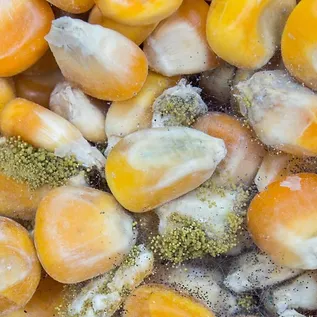
Mycotoxins can grow on a different number of crops and foodstuffs, the most common ones being the following:

Cereals, Grains
and Corn
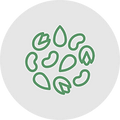
Nuts and
Spices

Apples and
Dried Fruits
A FEW KNOWN FACTS
Common Mycotoxins
Thriving in warm and humid conditions, about 25% of the world’s crops are contaminated with mycotoxins. They present a potentially hazardous threat to the worldwide health of animals and humans.

There are more than 500 known mycotoxins that can invade crops pre-harvest in the field, during growth or transport, and even during processing and storage.
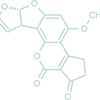
AFLATOXINS
Among the most poisonous, its potent carcinogens have been linked to liver cancer in animals and humans.
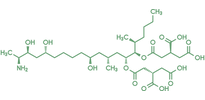
FUMONISINS
Found commonly in the soil of corn, this toxin can affect an animal's liver and kidneys, while causing esophegeal cancer in humans.
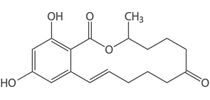
ZEARALENONE
Also known as ZEA, this toxin is found in the soil of wheat and can affect the hormones and estrogen of swine, causing infertility.

OCHRATOXIN A
This toxin causes a significant decrease in red blood cell numbers, causing liver and kidney damage in swine.

NIVALENOL /
DEOXYNIVALENOL
Produced and found in wheat soil, this toxin suppresses the immune system of animals and causes intestinal mucosa in humans.

T2/HT-2 TOXIN
Common to the soil that produces oats, this toxin suppresses an animal's immune system and leads to intestinal mucosa in humans.

PATULIN
Often found in rotting apples and apple products, this toxin damages the liver, spleen and kidneys of an animal, while causing nausea, vomitting and gastrointestinal issues in humans.
Mycotoxins by the Numbers
Each year, substantial quantities of food are affected by mycotoxins.
16m
Tons of maize
affected
1.8m
Tons of ground
nuts affected
12m
Tons of rice
affected
2.3m
Tons of soybeans
affected
328k
Tons of sorghum &
millet affected
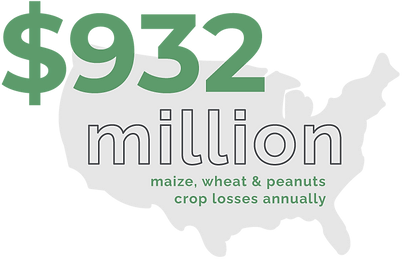
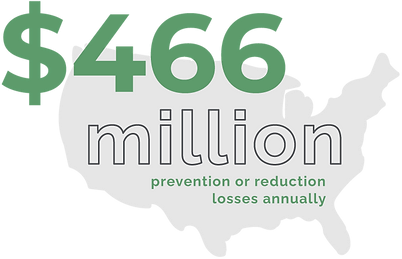
Mycotoxins can impact food security and nutrition, reducing access to healthy foods. On a worldwide scale, this damage can present a potential hazard to worldwide health and affect business opportunities, leading to economic losses.
71% of the world's feed is contaminated with more than one mycotoxin.
Contamination and concentration depend on temperature and humidity. Along with climate changes that add to the stress of animals in real production conditions, poor feed quality or changes to the animal's feed can always open a pathway for toxic contaminants.
SOLUTIONS AND PREVENTION
Prevention is better than a cure.
Minimizing the risk takes an integrated approach being controlled at all stages.
Below are some preventative steps that can be taken.

Inspect & Control
- Remove sources of contamination.
- Ensure adequate resources to test and diagnose at an early stage.
- Create targeted plant breeding practices.
- Use biological control methods.
Use Fresh Grains
-
Enforce strict food safety standards.
-
Promote better livestock feeding and management.
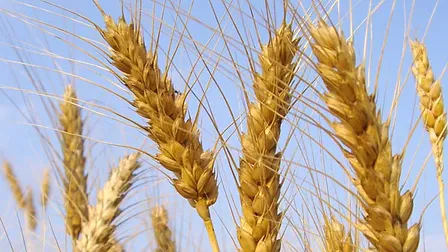
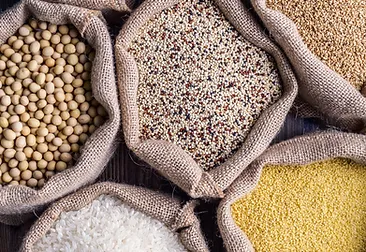
Proper Storage
- Promote better agricultural and storage techniques.
Inform & Educate
-
Educating consumers and farmers, especially small and subsistence farmers.
-
Create general awareness about personal protection.

BECOME PART OF THE SOLUTION
Agranco Mycotoxin Binders
Agranco’s Agrasorb® line of flow agents is carefully selected and specifically modified to provide optimum prevention from a variety of mycotoxin-created challenges in raw materials and finished feeds for all livestock species.
Get In Contact
